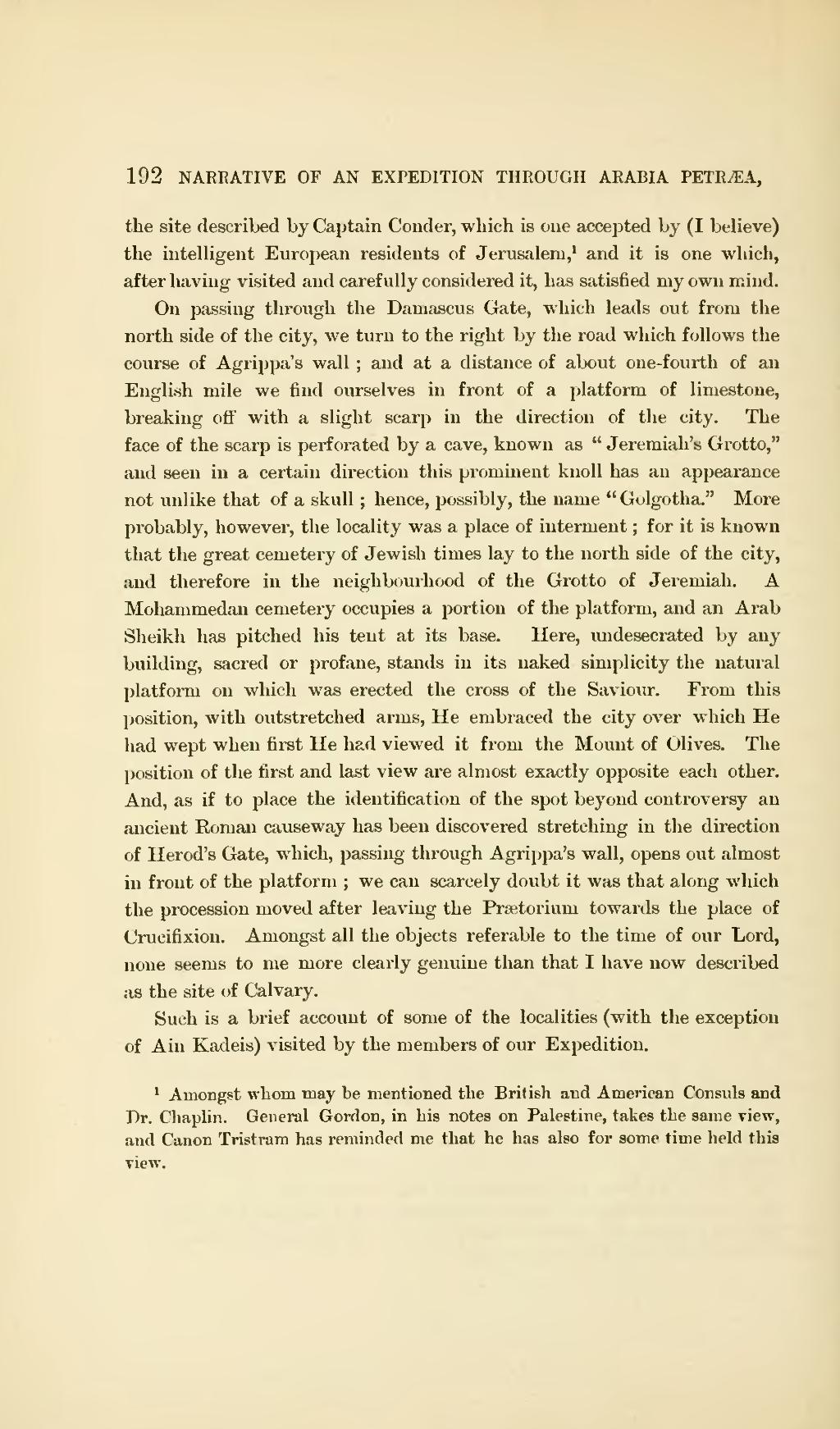the site described by Captain Conder, which is one accepted by (I believe) the intelligent European residents of Jerusalem,[1] and it is one which, after having visited and carefully considered it, has satisfied my own mind.
On passing through the Damascus Gate, which leads out from the north side of the city, we turn to the right by the road which follows the course of Agrippa's wall; and at a distance of about one-fourth of an English mile we find ourselves in front of a platform of limestone, breaking off with a slight scarp in the direction of the city. The face of the scarp is perforated by a cave, known as "Jeremiah's Grotto," and seen in a certain direction this prominent knoll has an appearance not unlike that of a skull; hence, possibly, the name "Golgotha." More probably, however, the locality was a place of interment; for it is known that the great cemetery of Jewish times lay to the north side of the city, and therefore in the neighbourhood of the Grotto of Jeremiah. A Mohammedan cemetery occupies a portion of the platform, and an Arab Sheikh has pitched his tent at its base. Here, undesecrated by any building, sacred or profane, stands in its naked simplicity the natural platform on which was erected the cross of the Saviour. From this position, with outstretched arms. He embraced the city over which He had wept when first He had viewed it from the Mount of Olives. The position of the first and last view are almost exactly opposite each other. And, as if to place the identification of the spot beyond controversy an ancient Roman causeway has been discovered stretching in the direction of Herod's Gate, which, passing through Agrippa's wall, opens out almost in front of the platform; we can scarcely doubt it was that along which the procession moved after leaving the Prætorium towards the place of Crucifixion. Amongst all the objects referable to the time of our Lord, none seems to me more clearly genuine than that I have now described as the site of Calvary.
Such is a brief account of some of the localities (with the exception of Ain Kadeis) visited by the members of our Expedition.
- ↑ Amongst whom may be mentioned the British and American Consuls and Dr. Chaplin. General Gordon, in his notes on Palestine, takes the same view, and Canon Tristram has reminded me that he has also for some time held this view.
